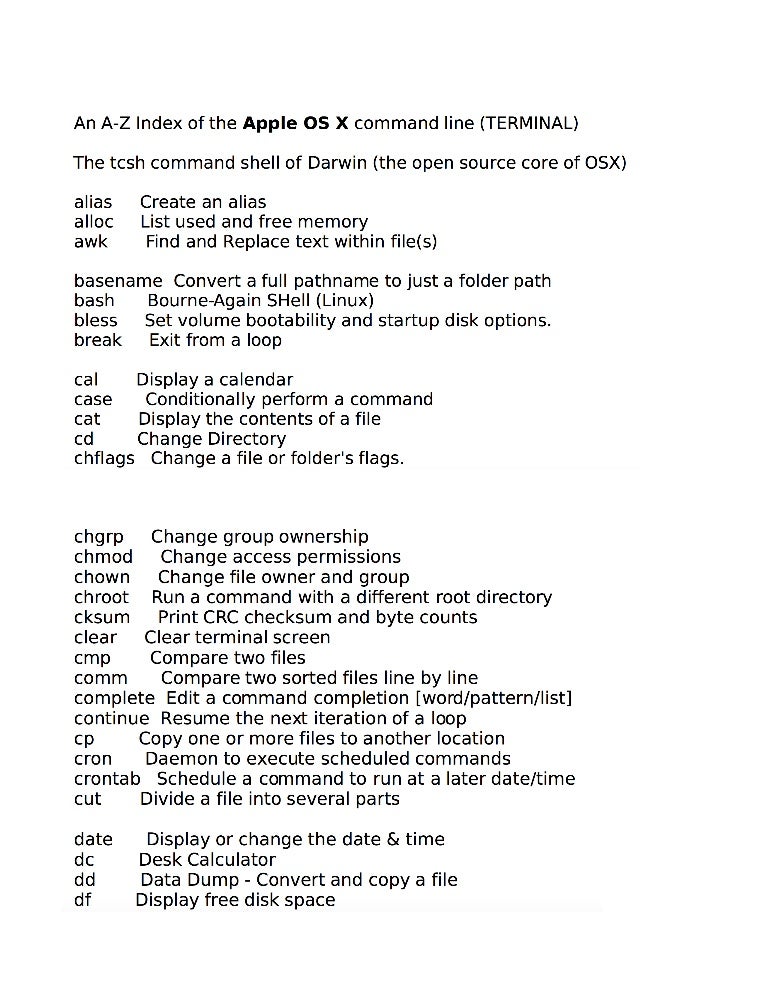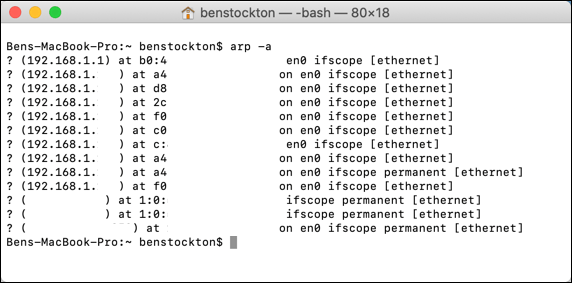

- #List of commands for mac how to#
- #List of commands for mac for mac os x#
- #List of commands for mac mac os x#
- #List of commands for mac full#
For instance, without arguments, ls will list the files in the directory you are currently in. So we are saying we want to list all of our files in our home folder. In our example the ~ is a shorthand name for a special folder on your computer: your home folder. They describe what we want our command to act on. Most often the order of the options do not matter, but occasionally they may. Any command should have some default behavior when called without options. When we modify the command with -l, it will display to us the files along with more detailed information. Without this option, the list will be simply the filenames. They usually modify the way the program will run. ls is short for list, meaning, I want to see a list of files somewhere on my computer. Once you have typed it out, hit enter to run it, and see what happens. This is a common convention used is denote what follows is a command to be run. The program, the options, and the arguments. Nearly all commands follow a common pattern with 3 main parts. The program we use to interact with the console is actually a “terminal emulator”, providing us the experience of typing into an old school terminal from the convenience of our modern graphical operating system. Terminal: This is the actual interface to the console. After the prompt is where you will be typing commands.

It usually provides some contextual information like who you are, where you are and other useful info. Prompt: This is the beginning of the command line. This is both the command line as well as the output from previous commands.Ĭommand Line: This is the actual line in a console where you type your command. I like to launch terminal by using Spotlight search in OS X, searching for “terminal”.Ĭonsole: This is the system as a whole. On OS X, open your Applications folder, then open the Utilities folder. So what we need to do is open the terminal.
:max_bytes(150000):strip_icc()/SiriMacCommands-58ade49e5f9b58a3c9d5113c.jpg)
#List of commands for mac how to#
How to use Terminal to open the command lineīefore you can use it, you need to be able to find it.
#List of commands for mac full#
For the most part they may be scanning for some key words, but mostly they are just waiting for it to stop.Ĭheck out our full library of learning courses. In fact, when you see an experienced user looking at a terminal that is scrolling line after line of text faster than you can even read it, they aren’t really reading it either. When you read some instructions that tell you to open up a terminal window and type some cryptic words and phrases, it can seem like you’ve been sucked into the matrix, expected to decrypt an endless stream of indecipherable characters.įear not, it’s really not that difficult to use. The command line can be a scary place when you first encounter it. Because of OSX’s unix heritage, much of the info here is also useful in other unix inspired systems, like the Linux command line.
#List of commands for mac mac os x#
Not all these functions work with every version of Mac OS X or with every hardware upgrade, but they are the most common.This is a command line tutorial primarily conducted in in the OS X command line.

Target disk mode: T (Note: Only for FireWire Macs).Safe-boot mode: Shift (Note: Disables nonessential and login applications).Boot to external hard drive: Command + Option + Shift + Delete.The following key combinations can be held as your Mac is powering on: While you cannot run any code from Terminal or otherwise to set an order of boot devices, you can easily control where your Mac boots via keyboard commands. The following is a more comprehensive list of the keyboard commands you know and many you may not.Ī recent tweet from reminded me of several boot commands I've learned over the years, so I thought a more comprehensive list would be useful for MacFixIt readers.
#List of commands for mac for mac os x#
Many users are aware of some boot commands for Mac OS X that provide different functionality for your system.


 0 kommentar(er)
0 kommentar(er)
